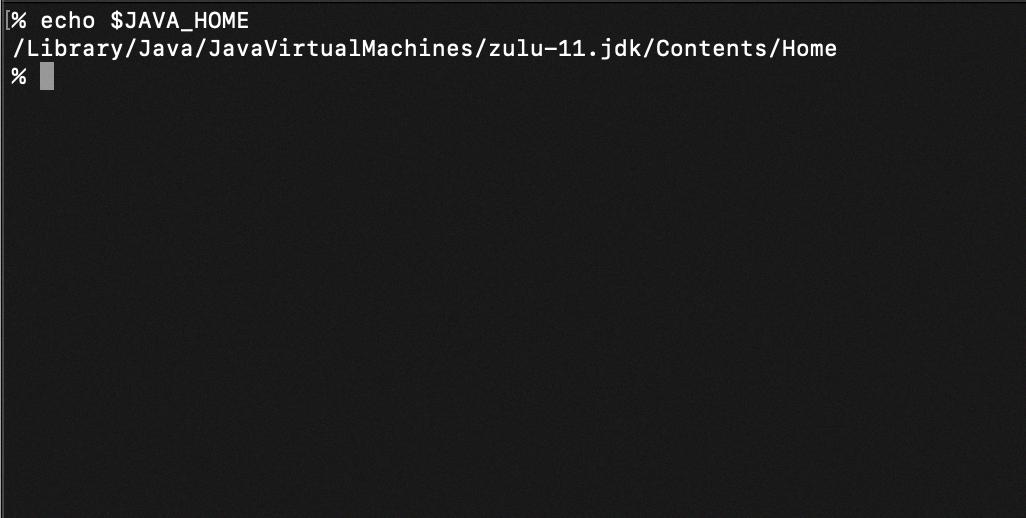If you’re a Mac user, you may have come acrss the term ‘Java_Home’ before. It’s a powerful environment variable that helps your system locate and use specific versions of Java. In this post, we’ll discuss what the Java_Home environment variable is, why it’s important and how to set it up on your Mac.
What is Java_Home?
The Java_Home environment variable is used by the Java Runtime Environment (JRE) to identify the directory in which it should be installed. It also provides information about which version of the JRE should be used when applications are run. This allows applications to access diffeent versions of the JRE if necessary, ensuring compatibility with different platforms and systems.
Why is it important?
Having an accurate and up-to-date version of the JRE installed can be essential for certain types of applications to function correctly. For example, some games may require a certain version of the JRE in order for them to run properly. Additionally, if you’re developing software or web applications in Java, then having an accurate version of the JRE can help ensure that your application is compatible with oter systems and platforms.
How do I set up Java_Home on my Mac?
Setting up Java_Home on your Mac can be done easily using Terminal. First, you need to open Terminal by typing “Terminal” into Spotlight Search or using Finder > Applications > Utilities > Terminal. Once open, type in “/usr/libexec/java_home -V” to list all installed versions of Java on your system as well as their corresponding paths. The last line will list the path for your active version of Java – this is what you need to use when setting up Java_Home. To set it up, type in “export JAVA_HOME=” where corresponds to the path from the previous command (without brackets). Now when running Terminal commands requiring a specific version of Java, your system will use this path automatically istead of searching for other versions on your machine or online.
Setting Java Home Path on Mac
Setting the Java home path on Mac is a relatively simple process, as long as you have the correct version of Java installed. First, open Terminal and confirm that you have JDK by typing “which java”. Next, check that you have the needed version of Java by typing “java -version”. Once you have confirmed this, set the JAVA_HOME path using this command in Terminal: export JAVA_HOME=/Library/Java/Home. To make sure it was successfully set, type “echo $JAVA_HOME” on Terminal and it shoud print out the path to your Java home directory.

Source: codejava.net
Setting JAVA_HOME on Mac
If you are usig Mac OSX 10.5 or later, you should set your $JAVA_HOME variable to /usr/libexec/java_home. To do this, open your ~/.bash_profile or your ~/.profile file, and add the line export $JAVA_HOME=/usr/libexec/java_home. Then save the file and restart your terminal session. This will ensure that the $JAVA_HOME environment variable is correctly set and can be used by applications that require it.
Setting Java Home on Mac Permanently
If you need to permanently set Java home on your Mac, here’s what you need to do:
1. Open Terminal and type “vim .bash_profile”, then press “i” to enter edit mode.
2. Type the path of your Java installation directory, for example: export JAVA_HOME=$(/usr/libexec/java_home).
3. Click ESC and type “:wq” (this will save and quit in Vim).
4. Type “source .bash_profile” to apply the chages you made in the profile file.
5. Type “echo $JAVA_HOME” to make sure that the path is correctly set up. If you see the path, then you are all set!
Setting JAVA_HOME
In order to set JAVA_HOME, you need to have the JDK software installed on your computer. Once you have it installed, you can right click My Computer and select Properties. On the Advanced tab, select Environment Variables. Then find the variable labeled JAVA_HOME and edit it so that it points to whre the JDK software is located. For example, if you have installed the JDK in C:\Program Files\Java\jdk1, then your JAVA_HOME variable should be set to this value. Once you have saved your changes, you should be able to use the JAVA_HOME environment variable in your system.
Finding the Java Path on a Mac
Finding the Java path on Mac is easy. First, open Finder and navigate to the /Library/Java/JavaVirtualMachines folder. In this folder you will find a folder for each version of Java installed on your Mac. The name of the folder will be in the format “jdk-version”. For example, if you have JDK 10 installed, the folder will be named jdk-10. Inside this folder you will find a Contents directory that contains the Home directory with all of the Java files. This is the full path to your Java installation on Mac: /Library/Java/JavaVirtualMachines/jdk-10/Contents/Home.

Source: code2care.org
Setting the Path on a Mac
Setting the path on a Mac is a simple process that can be done by adding an export command to your .bash_profile file. First, open the .bash_profile file in your home directory (for example, /Users/your-user-name/.bash_profile) in a text editor. Then, add the line “export PATH=”your-dir:$PATH” to the last line of the file, substituting “your-dir” with the directory you want to add. Once you save the .bash_profile file, restart your terminal and the new path will be available.
What is the JAVA_HOME Environment Variable?
JAVA_HOME is an environment variable that can be set after installing either the Java Development Kit (JDK) or the Java Runtime Environment (JRE). By setting this variable, you are providing a file system location on your computer whre the JDK or JRE was installed. This allows programs and applications that rely on Java to quickly and easily access the necessary files. It also helps streamline any potential configuration issues you may encounter when dealing with Java-based software. Ultimately, JAVA_HOME is a helpful tool for ensuring that your system can properly run Java-based programs and applications.
Setting Environment Variables in Mac
Setting environment variables in Mac is a fairly straightforward process. First, you need to open the Terminal application. Then, run the following command: export VARIABLE_NAME=VALUE (replacing VARIABLE_NAME with your desired variable name and VALUE with your desired value). This will set the environment variable to the value you specified.
If you want to make this change permanent, you can use a text editor such as nano or vim to edit the ~/.profile file. Add a line that reads “export VARIABLE_NAME=VALUE” (again replacing VARIABLE_NAME and VALUE with your values) at the bottom of this file. Save and close the file, then run source ~/.profile in Terminal to apply the changes.
To check that your changes have been applied correctly, type echo $VARIABLE_NAME in Terminal. You sould see the value you specified appear onscreen if everything has been set up correctly.
Setting Environment Variables on Mac Permanently
Setting environment variables permanently on a Mac is easy to do. First, open the Terminal app (you can search for it in Spotlight Search). Then, type the folloing command to open your .bash_profile file:
open -e ~/.bash_profile.
This will open up a text editor window whre you can enter your environment variables. To add an environment variable, simply type export followed by the name of the variable, an equal sign and its value. For example, if you wanted to set a variable called MYVAR with a value of “hello”, you would use this line:
export MYVAR=”hello”
Once you are done adding all of your environment variables, save the file and close it. The next time you open up Terminal, the environment variables will be available for use.
Checking Environment Variables on Mac
On Mac, you can check the environment variables by launching Terminal or a shell. Once the Terminal or shell is open, enter the command “printenv”. This will display a list of all the environment variables that are set. The environment variables are used to store information about your system’s settings and preferences, such as your PATH, HOME directory, and other environmental settings. By looking at these variables, you can modify them to suit your needs or troubleshoot any issues you may be haing with your system.
Installing Java on Mac
Installing Java on Mac is a quick and easy process. To begin, you will need to download the jre-8u65-macosx-x64.pkg file from the Oracle website. Once you have downloaded the package, double-click on it to launch the Install Wizard. The Install Wizard will display the Welcome to Java installation screen which will give you an overview of what is needed for a successful installation.
Next, click “Continue” and review the license agreement. If you agree to the terms and conditions, check the box and click “Continue” again. On the next page, select your destination folder where you would like Java to be installed and click “Install”. The installation process should take around a few minutes and then click “Close” when it is finished.
Finally, open up System Preferences and locate Java Control Panel under Other section at the bottom of the window. Here you can configure different settings for your installed version of Java such as security settings or update settings etc. Additionally, Oracle has partnered with companies that offer various products rlated to Java which can be accessed from this panel as well.
Checking if JAVA_HOME Is Set
To check if JAVA_HOME is set, open a Command Prompt window (Win? + R, type cmd, hit Enter). Then enter the command “echo %JAVA_HOME%”. This should output the path to your Java installation folder. If it doesn’t, then the JAVA_HOME variable was not set correctly. To set JAVA_HOME, you will need to frst find the path of your Java installation folder and then add it as a system variable. You can do this by right-clicking on My Computer (or This PC in Windows 10) and selecting “Advanced System Settings”. Then select “Environment Variables” and add a new system variable called JAVA_HOME with the value being the path of your Java installation folder.
Do I Need to Set JAVA_HOME in the Path?
Yes, it is necessary to add the JAVA_HOME variable to your system path in order for your computer to be able to locate and utilize the Java Runtime Environment (JRE). Setting the JAVA_HOME environment variable will help ensure that your system knows where to look for Java-related files, so that you can use the varius Java tools, libraries, and applications that you have installed. Additionally, many applications require JAVA_HOME to be set in order for them to run correctly. For these reasons, it is highly recommended that you set this environment variable and add it to your system path.
Should JAVA_HOME Point to JRE or JDK?
It is highly recommended that JAVA_HOME points to the JDK (Java Development Kit) raher than the JRE (Java Runtime Environment). The JDK includes the JRE and contains all the tools needed to develop Java applications, such as compilers, debuggers, and other development tools. Therefore, it provides a more complete environment for running your application. Additionally, some tasks, such as compiling or debugging an application, require the java development tools that are included in the JDK but not in the JRE.
Updating Java on Mac Terminal
Updating Java on Mac Terminal is a simple process that requires a few steps. First, open the Terminal application by clicking on the Applications folder in Finder and selecting Utilities, then double-clicking on Terminal. Once inside the Terminal window, you can use the folloing command to check your currently installed version of Java: java -version.
If your version is outdated, you can update it with the fllowing command: sudo /Library/Internet\ Plug-Ins/JavaAppletPlugin.plugin/Contents/Home/bin/java -version. This will prompt for your administrator password; enter it to continue with the update process.
Once complete, restart your Mac and type java -version aain in Terminal to verify that Java has been successfully updated.
Setting JAVA_HOME in User Variables
Yes, you can set JAVA_HOME in a user variable. To do this, go to the ‘Environment Variables’ section of your computer’s settings. Under the ‘User Variables’ section, click ‘New’. In the ‘Variable Name’ field, enter ‘JAVA_HOME’, and in the ‘Variable Value’ field, enter the path to your JDK installation (which will vary depending on where your JDK is installed). After entering this information, click OK to save the new environment variable and you are all set!
Difference Between JAVA_HOME and JRE_HOME
JAVA_HOME is the environment variable that points to the installation directory of JDK (Java Development Kit). The JDK contains the Java Runtime Environment (JRE), which is used by the Java Virtual Machine (JVM) to run compiled Java applications. JRE_HOME, on the oter hand, is an environment variable that points to the installation directory of JRE (Java Runtime Environment). The JRE contains all the necessary libraries and files required to run compiled Java applications. Therefore, when a user runs a compiled Java application, JVM will look for the necessary libraries and files in JRE_HOME.
Conclusion
Setting the Java_Home environment variable on a Mac is a useful way to manage multiple versions of Java. It ensures that the correct version of the Java Development Kit (JDK) is used for any given application or project. This can be done through the Terminal, by setting an environment variable that points to the desired version of Java. The variable should be named JAVA_HOME and set to the path of the JDK installation directory. Once set, this environment variable will be used by applications and programs that require it, allowing you to switch beteen different versions of Java without having to reconfigure them manually each time.








